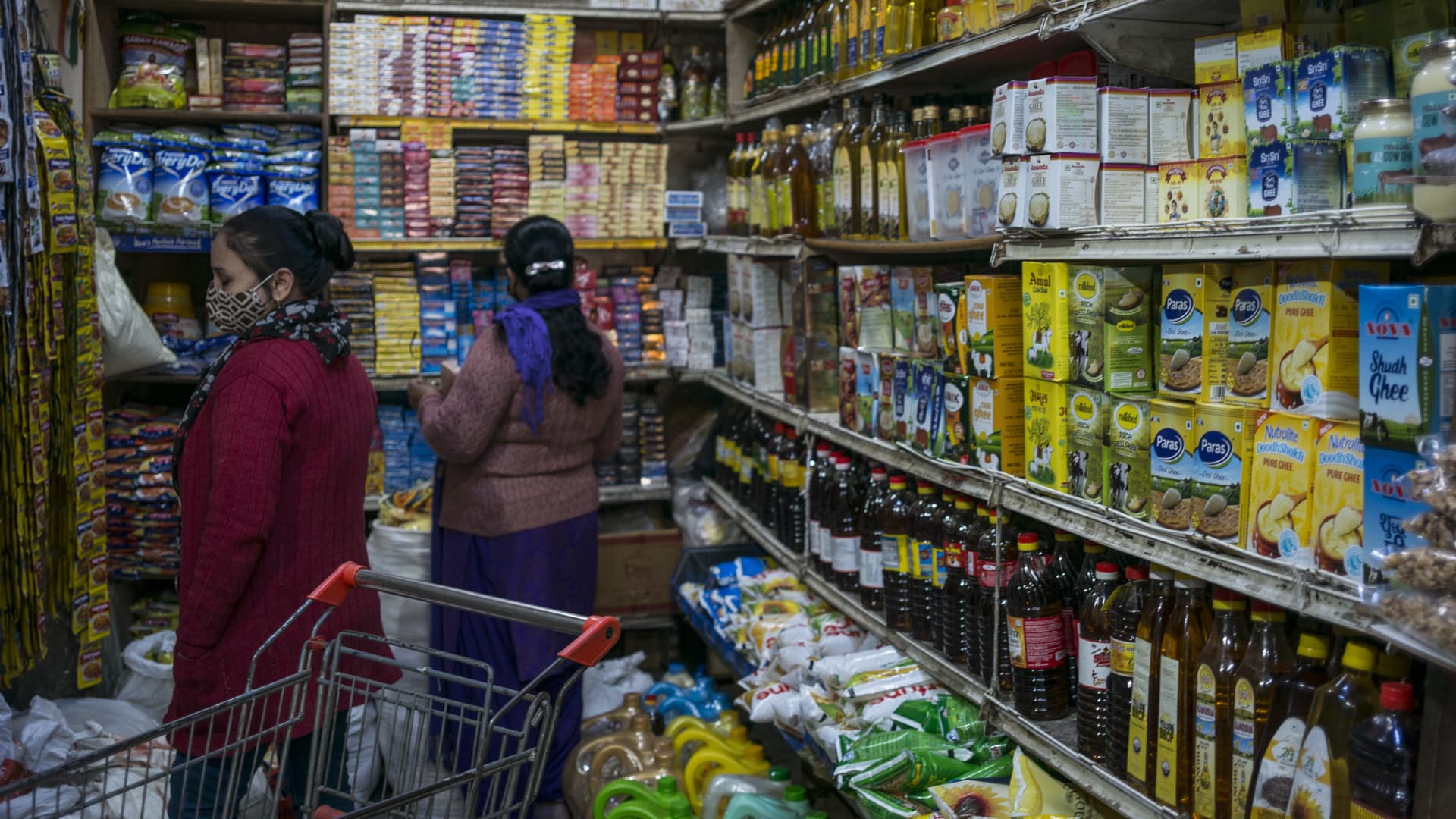
Customers browsing through goods at a store on the outskirts of New Delhi, India, in February as prices continue to rise, with inflation figures for March nearing 7%.
Anindito Mukherjee/Bloomberg via Getty Images | Bloomberg | Bloomberg | Getty Images
Inflation in India is up sharply and signs point to a continuing upward trend, analysts told CNBC.
Figures released by India’s Statistics Ministry on Tuesday show retail inflation rose 6.95% in March from a year ago. That marked the third consecutive month that retail inflation breached the central bank’s upper tolerance margin of 6%.
The Modi government has mandated the Reserve Bank of India keep retail inflation at 4%, with a margin of 2%, for a five-year period ending March 2026.
Last week, India’s central bank revised its inflation forecast upwards — from 4.5% to 5.7% — for the current fiscal year ending March 2023. The RBI also signaled it would pivot from supporting economic growth to containing inflation.
“In the sequence of priorities, we have now put inflation before growth. Time is appropriate to prioritize inflation ahead of growth,” RBI Governor Shaktikanta Das told reporters on April 9.
The RBI also lowered India’s economic growth forecast for the current fiscal year from 7.8% to 7.2%, citing escalating geopolitical tensions.
Inflation will continue to trend higher and remain above the RBI’s 2% to 6% target over the next 12 months, predicted Sonal Varma, Nomura’s chief economist for India and Asia.
“Policy rates are ultra accommodative. And we think RBI will have to start a policy course correction starting in June,” she told CNBC’s “Squawk Box Asia” on Wednesday.
Carnegie India’s Suyash Rai agreed the benchmark rate could change.
“If the March inflation figure leads to a revised forecast, the RBI might raise the rates sooner,” Rai said.
The RBI has kept the benchmark rate steady at 4% since May 2020, maintaining its accommodative stance while suggesting it will be prepared to focus on inflation.
The rise in inflation was anticipated, chief economic advisor to the Indian government V. Anantha Nageswaran told CNBC.
“The central bank has very clearly signaled that it is now committed to prioritizing inflation containment rather than to supporting growth,” he said.
Nageswaran also said the government had taken measures like reducing import duties on palm oil imports to help combat food inflation.
“But we should not forget that what we are dealing with is a global phenomenon,” Nageswaran told CNBC’s “Street Signs Asia” on Wednesday.
Sign of a ‘maturing’ economy
Asked if the government would reduce taxes on fuel to offset rising crude prices, he said the government will monitor the situation for now.
“If prices sustain at high levels for a quarter or two or longer, beyond $110 [a barrel], there has to be some sort of burden-sharing between the government and households,” he said, though he added fuel consumption should come down through wider use of public transport.
Nageswaran said the current anxiety over inflation was a sign of a maturing economy.
“The fact that India is now getting exercised about inflation rates that are around 6% to 7% is a sign of a maturing of the Indian economy… because earlier, India’s average inflation rate used to be around 7% for the best of five decades or so, until 2010. But the fact that now we are getting very concerned about 7% as a sort of a big inflation rate shows that expectations are indeed shifting.”




